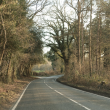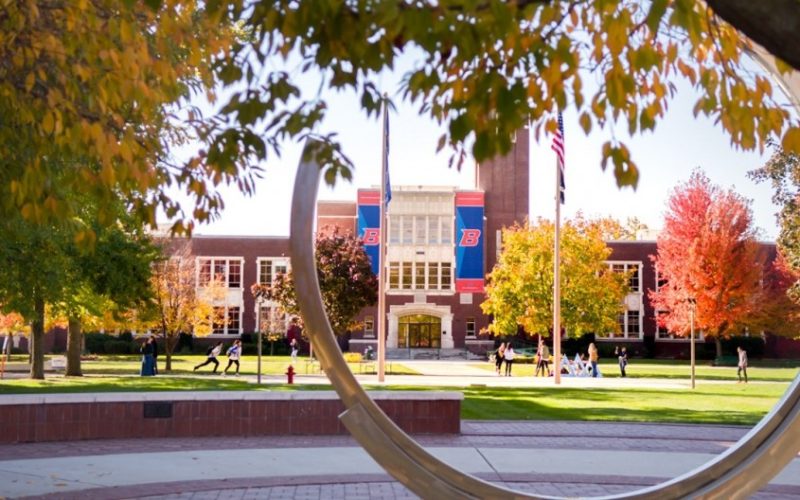Boise State University announced plans for a significant construction project on campus, selecting a southeast campus location for a new science research building that will reshape both the physical campus and the university’s research trajectory. The facility, positioned at Belmont Street and Euclid Avenue behind the Environmental Research Building, represents one of chief financial and operating officer Alicia Estey’s most significant institutional investments as she prepares to conclude her tenure at the university and transition to the University of Vermont.
“This new facility represents a bold step forward in Boise State’s commitment to research excellence, interdisciplinary collaboration and workforce development,” said Alicia Estey, Chief Financial and Operating Officer, and Vice President for Finance and Operations. “We are designing spaces that will maximize collaboration, drive scientific discovery, and ensure our students and faculty have the resources to lead in their fields.”
Leadership Transition
The science building project comes as Estey prepares to transition to a new leadership role as Vice President for Finance and Administration at the University of Vermont, capping a 19-year career at Boise State that has fundamentally shaped the institution’s financial stability and growth trajectory.
Selected through a national search process, Estey will succeed retiring Vice President Richard Cate. Her departure marks a transition for Boise State, where she has served in progressively responsible roles across finance, compliance, legal affairs, public health, and operations since joining the university in 2006.
Throughout her tenure, Estey has overseen critical initiatives that positioned Boise State for sustained success, including her leadership during the COVID-19 pandemic that maintained campus operations and her systematic approach to eliminating the university’s structural deficit.
“Alicia has been a stabilizing force for Boise State during the past two decades. Her commitment to our students and campus community, combined with her innovative approach and strategic mindset, has better positioned the university for the future,” noted Jeremiah Shinn, Boise State interim president, acknowledging her comprehensive contributions to the institution’s development.
Research Infrastructure Drives Classification Advancement
The science building emerges from Boise State University’s remarkable growth trajectory. Research expenditures have surpassed $70 million, nearly double the amount from a decade ago, while the university maintains stable enrollment growth in STEM fields. The current science building operates beyond capacity, creating immediate infrastructure needs that align with longer-term research ambitions.
For Estey, who oversaw a $743 million budget spanning 37 campus units, this project embodies her systematic approach to institutional development. When she first stepped into the CFO role, she gathered all deans and senior leaders to address a structural deficit collectively. “I knew that this would not work if it were a top-down solution,” she explained. “I had to engage the people who this would impact the most and work with them to come up with a solution.”
The new building targets interdisciplinary life sciences with emphasis on biological and biomedical research across biology, chemistry, biochemistry, physics, neuroscience, biomolecular sciences, and environmental studies. The five-year construction timeline projects occupancy in 2029, positioning Boise State University for advancement to R1 research classification.
Universities must maintain at least $50 million in annual research expenditures and grant at least 70 research doctorates each year to qualify for R1 status—the Carnegie Classification system’s highest research designation. Boise State currently holds R2 classification, having reached the spending threshold and falling just six short of the doctorate degree requirement.
“We are designing spaces that will maximize collaboration, drive scientific discovery, and ensure our students and faculty have the resources to lead in their fields,” Estey explained. The building location creates a research corridor on campus’s southeast edge, connecting with existing facilities to foster the interdisciplinary collaboration that has become a hallmark of Boise State’s approach.
“This new facility represents a transformative investment in Boise State’s ability to drive scientific discovery, foster interdisciplinary collaboration, prepare the next generation of STEM leaders for Idaho’s growing workforce and reimagine the use of the current science building,” said Nancy Glenn, vice president for research and economic development.
The project reflects Estey’s philosophy of strategic investment based on demonstrated need and clear return potential. “We are working diligently to understand where we are spending money that we could be reinvesting in initiatives that will have a higher ROI for our students,” she has noted. The science building addresses immediate capacity constraints while creating conditions for research growth and enhanced classification.
Construction Momentum Reflects Institutional Confidence
The science building announcement follows other major campus developments under Estey’s financial oversight, including a new residence hall opening fall 2025 with 452 beds for first-year students and planned expansion of Albertsons Stadium’s north end zone.
“We are redeveloping and expanding the north end zone of our stadium because football is very popular,” Estey explained. “Athletics does not receive a significant allocation of state funding. They earn their revenue primarily through ticket sales for football games. We’re going to expand the north end zone and add more sky boxes so that we can generate more revenue to help support our athletics programs.”
The athletic facility expansion reflects her understanding of revenue diversification—the same principle that guided her approach to addressing the structural deficit. Rather than relying solely on traditional funding sources, she identified opportunities to generate sustainable revenue streams that support institutional goals.
Construction will proceed while the university manages other major projects, including the ESI Construction Management Building—the first mass timber structure on campus featuring donated materials from Boise Cascade. The simultaneous developments showcase Estey’s ability to coordinate complex, overlapping construction timelines while maintaining operational continuity as she prepared for her transition to Vermont.
“Boise State has seen enrollment increases across STEM fields, and the current science building is beyond capacity,” according to the university announcement. The infrastructure investment responds to demonstrated demand while positioning the institution for continued growth in research-intensive programs.
Strategic Investment Philosophy Drives Growth
Estey’s diverse background spanning accounting, law, and public health has equipped her to evaluate complex institutional investments from multiple perspectives. When COVID-19 challenged universities nationwide, her public health expertise proved invaluable as she established testing facilities, contact tracing systems, and residential quarantine protocols that kept Boise State operational.
“I did not think I’d have an opportunity to work in public health until COVID, and then suddenly it became very relevant,” she recalled. That experience reinforced her belief in building institutional capacity that can adapt to unexpected challenges—a principle reflected in the science building’s interdisciplinary design.
The facility will serve multiple departments and research initiatives, creating flexibility for evolving academic programs and collaborative projects. “Additional space will enable Boise State to graduate more students in technology and science majors, critical workforce development areas for Idaho,” officials noted.
For Estey, whose leadership philosophy centers on service to students and faculty, the science building represents institutional evolution guided by clear priorities. “For my division specifically, we are here to serve others,” she said. “We are here to support students and faculty.”
The project timeline extends beyond typical budget cycles, requiring sustained commitment to research investment and infrastructure development. Estey’s track record of collaborative leadership and strategic financial management positions Boise State University to execute this ambitious construction project while maintaining the fiscal responsibility that has characterized her tenure.
“We are in an area that is growing in population. We have a solid track record. Our graduation rates are increasing,” Estey noted. The science building capitalizes on these strengths, creating research infrastructure that supports continued enrollment growth and enhanced academic programming in high-demand fields.









